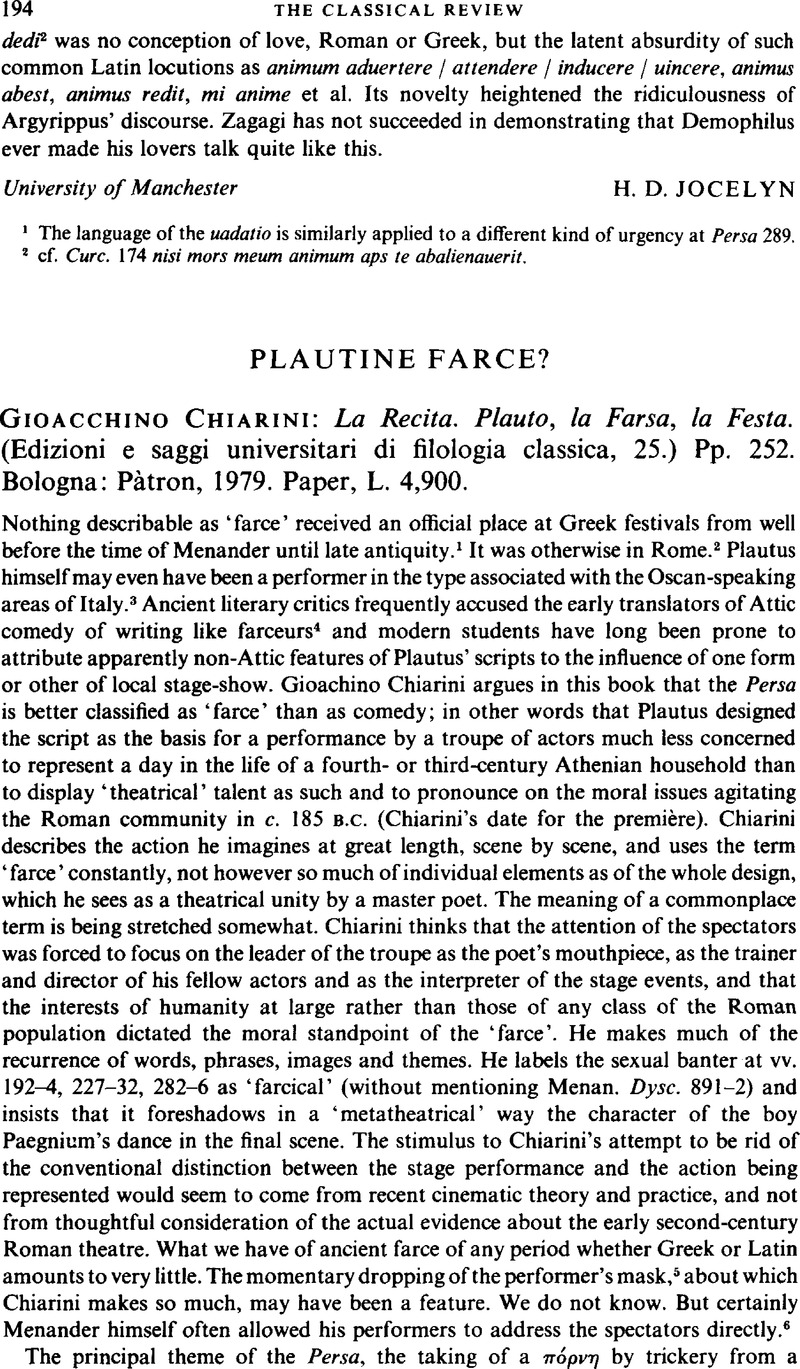No CrossRef data available.
Article contents
Plautine Farce? - Gioacchino Chiarini: La Recita. Plauto, la Farsa, la Festa. (Edizioni e saggi universitari di filologia classica, 25.) Pp. 252. Bologna: Pàtron, 1979. Paper, L. 4,900.
Published online by Cambridge University Press: 27 February 2009
Abstract

- Type
- Reviews
- Information
- Copyright
- Copyright © The Classical Association 1981
References
1 cf. Robert, L., REG 49 (1936), 243–248Google Scholar (= Opera Minora Selecta 1, 679–84).
2 See Cicero, Fam. 9. 16. 7.
3 On the name ‘Maccus’ at Asin. 11 see Bücheler, F., RhM 41 (1886), 12Google Scholar (= Kl. Schr. III, 92–3).
4 See Horace, Epist. 2. 1. 173 (on Plautus), Gellius 2. 23. 12 (on Caecilius). For the critical distinction between κωμῳδία and μῖμος see Plutarch, Mor. 706d.
5 cf. Persa 159–60, 820, 856–8; arguably also 167, 410–11.
6 cf. Dysc. 194 and Bain, D., Actors and Audience (Oxford, 1977), pp. 190 ff.Google Scholar
7 Plautinisches im Plautus (Berlin, 1922), pp. 89Google Scholar n. 2,266; Elementi Plautini in Plauto (Florence, 1960), pp. 83Google Scholar n. 3, 256–7; Addenda, pp. 405–6.
8 cf. Müller, G. L., Das Original des Plautinischen Persa (Diss. Frankfurt am Main, 1957), pp. 3–37Google Scholar, G. W. Williams, CR n.s. 10 (1960), 128–9.
9 De T. Macci Plauti Persa (Diss. Utrecht, 1884), pp. 47–83.Google Scholar
10 See Meyer, M., De Plauti Persa (Diss. Jena, 1907Google Scholar = Comm. philol. Ien. VIII, 143–92), pp. 152–9, for a refutation of Ijsendijk's much more modest theory.
11 For an Athenian slave with large responsibilities see Plut. Per. 16. 5–6. For high living among Athenian slaves see [Xen.] Ath. pol. 1.11.
12 Chiarini (pp. 18–19) accepts T. Frank's idiosyncratic calculation of the 600 nummi of v. 36 as amounting to 24 μναῖ (AJPh 54 (1933), 370).
13 Contrast vv. 406–48.


